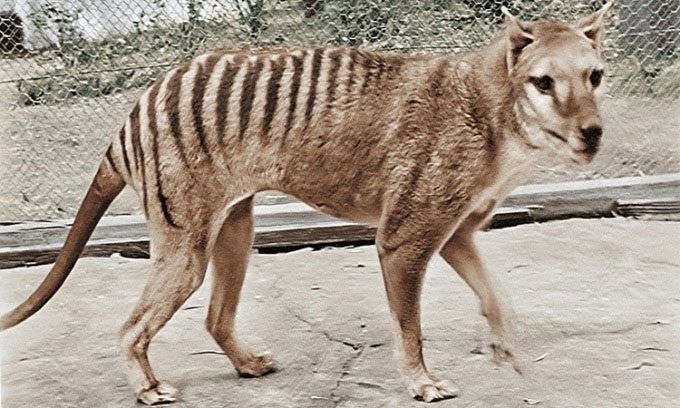Scientists are unable to provide an exact number of animal species pushed to the brink of extinction by humans; however, the figure may reach into the hundreds.
From dodo birds to Tasmanian tigers, many animals have gone extinct due to human impact, according to Live Science. Based on confirmed extinction data, a total of 777 animal species have become extinct since the onset of the modern era in 1500, as documented in the Red List of the International Union for Conservation of Nature (IUCN). While some species have gone extinct naturally, humans have contributed to the majority of cases through their impact on nature, particularly over the past 500 years. Humans began causing animal extinctions thousands of years ago, but scientists cannot study those cases, so we will focus on the last 500 years.

The Tasmanian Tiger is one of the 777 extinct animal species since 1500 in the Red List. (Photo: HUM Images).
The IUCN assesses the extinction risk of 5% of known species worldwide, indicating that there are certainly many more extinction cases that have not been recorded. A study published in 2022 in the journal Biological Reviews suggests that 150,000 – 260,000 known species could have gone extinct since 1500. This staggering figure surprised the lead researcher, Robert Cowie, a professor at the University of Hawaii. To arrive at this number, his team randomly sampled 200 land snails and used previous scientific research along with expert consultations to determine how many snail species had become extinct. They then estimated the number of extinct animal species if all known species experienced a similar extinction rate over the past 500 years. Cowie’s method indicated that 100,000 of the 2 million known species had gone extinct during this period.
John Alroy, an associate professor in the Department of Biological Sciences at Macquarie University in Australia, is seeking to quantify diversity and extinction rates. According to him, calculating modern extinction rates is challenging. To understand the extinction rate, researchers first need to know how many animals exist. However, scientists have not discovered the vast majority of wild animals around the world. They are often concentrated in under-researched tropical regions. The problem is further complicated by the fact that insects encompass more species than any other animal group, and humans know very little about them compared to larger groups like mammals and birds.
Alroy suggests estimating extinction rates using data from museums for certain animal groups and studying how many species have disappeared over time. Regardless of what the exact number is, he emphasizes that humans are exacerbating extinction levels, and the number of extinct species is much higher than the 777 species listed in the Red List.


















































